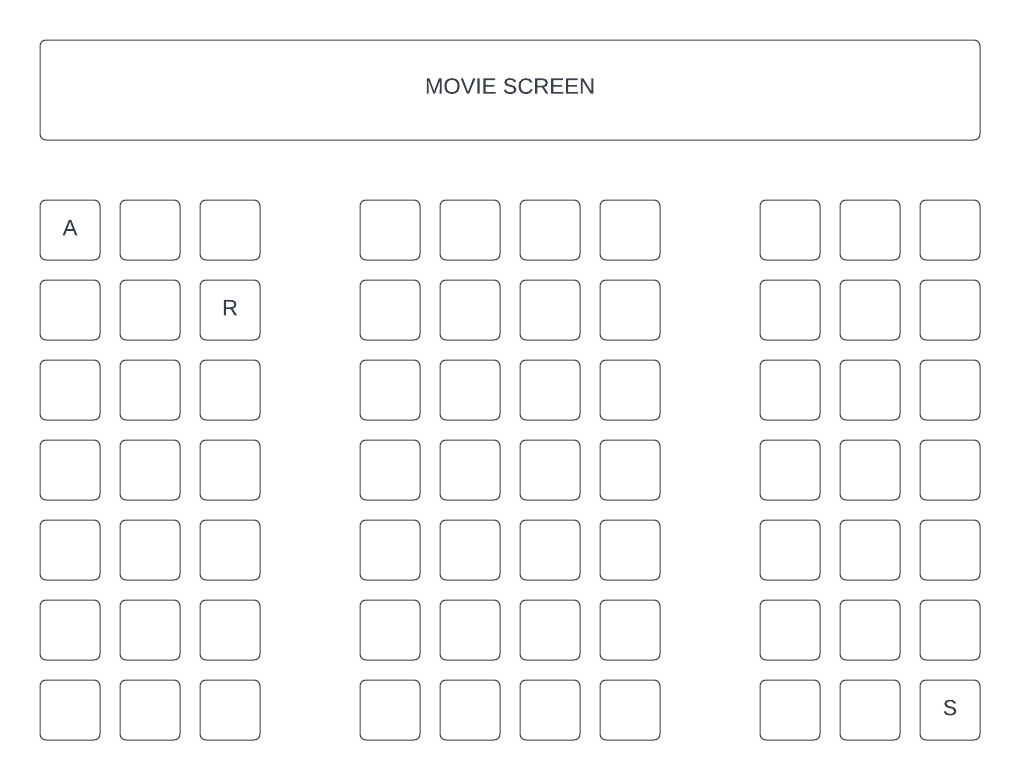Login or Create an Account to view the mark scheme (answer), comment, and add to a test
Consider the following diagram representing seats in a movie theater where each seat is specified by a row number ranging from 1 to 7 (inclusive) and a column number ranging from 1 to 10 (inclusive).
The theater's ticketing system has already allocated Andrew ("A"), Sally ("S") and Rufus ("R") seats for an upcoming screening.

The ticketing system stores ticketing information in a collection called TICKETS.
TICKETS is composed of nodes where values alternate between integers and strings - each integer has encoded seating information for the customer whose name is held as a string in the next node. The first two digits and the last two digits of each integer specify the row number and column number of a seat respectively. For example, Rufus has a ticket for the third seat across in the second row.
TICKETS contains only those customers with a ticket and all ticket holders have exactly one allocated seat each. In TICKETS, it can be assume that a customer name will always follow their seating number. Therefore, customer seating information is always held in sequentially linked pairs - for example:

(a).
Construct an algorithm to only output all ticket holder names held in TICKETS.
[4](b).
Describe one problem with storing ticketing information in this way and explain why a 2D array would be more appropriate.
[3](c).
Given a 7x10 2D array called TIX, construct an algorithm to parse ticketing information from the collection TICKETS into TIX such that ticket holder names are copied to a TIX location representative of their seat location. For example, TIX[0][0], TIX[1][2], and TIX[6][9] should hold the names "Andrew", "Rufas" and "Sally" respectively.
Unassigned seats should be indicated in TIX by the string "Empty".
[7]Extended Response14 MarksPremium
55 Uses266 Views2 Likes